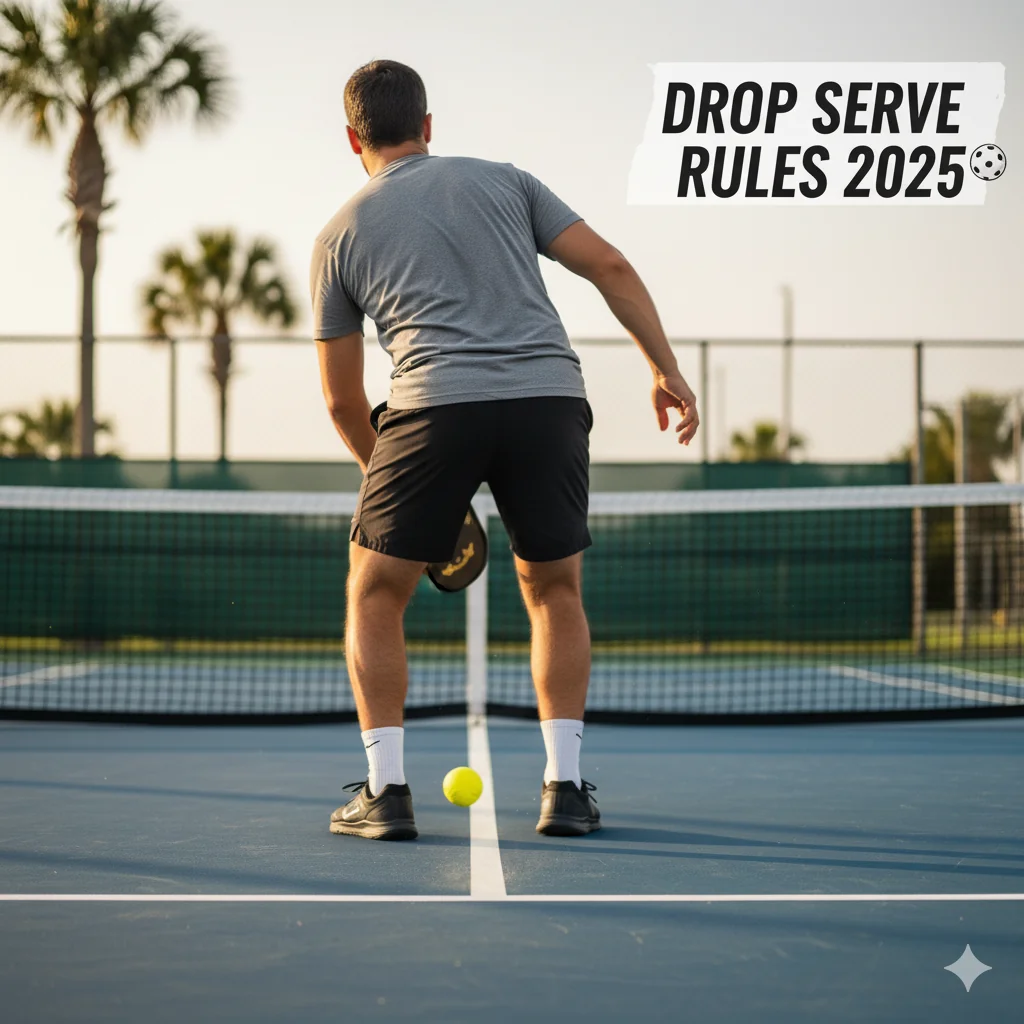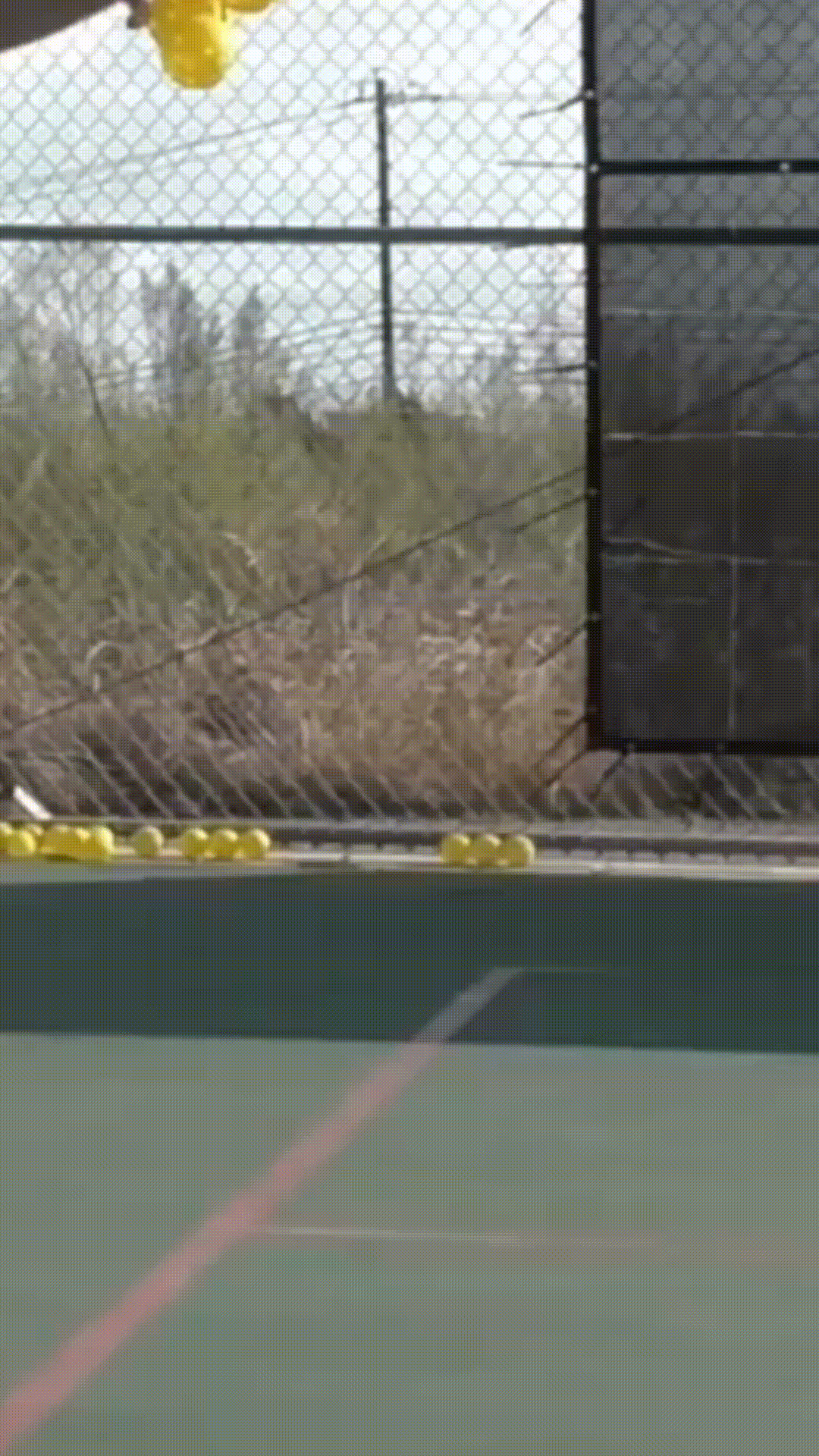Pickleball Drop Serve Rules Explained (2025 Guide)

The drop serve has become a popular and essential part of modern pickleball, offering an alternative to the traditional volley serve. But with its rise in popularity comes confusion about the specific regulations. Are you dropping it correctly? Can you spin it? This guide will break down the official pickleball drop serve rules for 2025, providing you with clear, step-by-step instructions to ensure your serve is always legal and effective.
What is the official pickleball drop serve rule?
The official pickleball drop serve rule states the server must drop the ball from any height, using only gravity, so that it bounces at least once on the court before being struck. The player cannot propel the ball downwards or toss it upwards. The ball can be hit after the bounce with no restrictions on paddle movement (e.g., it can be an overhand motion).
In This Guide
What is the Pickleball Drop Serve?
The drop serve is an alternative serving method in pickleball. Instead of hitting the ball out of the air (a volley serve), the player drops the ball and lets it bounce on the court before striking it.
This method was introduced to simplify the serving motion and reduce foot faults and illegal serves that were common with the traditional volley serve. It's a great option for beginners and a strategic choice for advanced players looking to add variation to their game.
The Official Drop Serve Rules (Step-by-Step for 2025)
To perform a legal drop serve, you must follow three simple steps. Getting any of these wrong can result in a fault. Here are the official pickleball drop serve rules you need to know:
1. The Drop
- You must release the ball from your hand (or paddle face) from any height.
- The key is that the release must be unaided. You can't add any force or propulsion to the drop.
- This means no tossing the ball up and no throwing or slamming it down.
2. The Bounce
- The ball must bounce at least once in-bounds on your side of the court before you hit it.
- The bounce can happen anywhere on the playing surface, including inside or outside the service box where you are standing.
3. The Hit
- After the ball bounces, you can hit it.
- Unlike the traditional volley serve, there are no restrictions on your swing. You can hit the ball with an upward motion (underhand) or a downward motion (overhand).
- Your feet must remain behind the baseline until after you make contact with the ball.
Official Rulebook: No Propulsion
The rulebook is very clear on this point: 'The ball shall not be propelled (thrown) downward or tossed or hit upward by the server's hand or paddle.' The drop must rely only on gravity.

A legal drop serve requires a clean drop, a single bounce, and then contact with the paddle.

With a drop serve, you simply let the ball bounce once before striking it.
Common Drop Serve Mistakes to Avoid
Many players accidentally commit faults when trying the drop serve. Here are the most common errors:
- Propelling the Ball Down: The most frequent mistake is adding downward force when dropping the ball. Remember, just open your hand and let it fall.
- Tossing the Ball Up: Some players have a habit of slightly tossing the ball before a serve. This is illegal for a drop serve.
- Hitting Before the Bounce: You must wait for the ball to bounce. Hitting it out of the air after dropping it is a fault (this would be an illegal volley serve).
- Dropping the Ball Outside the Court: If you drop the ball and it lands outside the playing lines (e.g., in the grass), you cannot play it. You can simply pick it up and restart your service motion as long as you haven't exceeded the 10-second rule.
Common Mistake: The Accidental Toss
Be mindful of your release. Even a small, unintentional upward toss before the drop makes the serve illegal. Practice a clean, gravity-led release to build good muscle memory.
Pro Tip: Use the Bounce to Your Advantage
You can drop the ball from a higher or lower point to change the height of the bounce. A higher drop can create a higher bounce, allowing you to hit a more aggressive, topspin serve. Experiment to see what works best for you!
Frequently Asked Questions About the Drop Serve
Are the pickleball drop serve rules different in 2025?
As of the latest updates, the core pickleball drop serve rules remain consistent for 2025. The key principles—letting gravity do the work, ensuring the ball bounces before contact, and not propelling the ball—are unchanged. Always check the official USA Pickleball rulebook for the most current regulations, but no major changes to the drop serve are anticipated.
Can I spin the ball when I drop it for a serve?
No. You cannot impart spin on the ball with your hand as you release it. The drop must be clean. However, you are free to hit the ball with as much spin as you like with your paddle after it has bounced.
Do I have to use the drop serve?
No, the drop serve is an optional, alternative serve. You can always choose to perform a traditional volley serve, as long as you follow its specific rules (underhand motion, contact below the navel, and paddle head below the wrist).